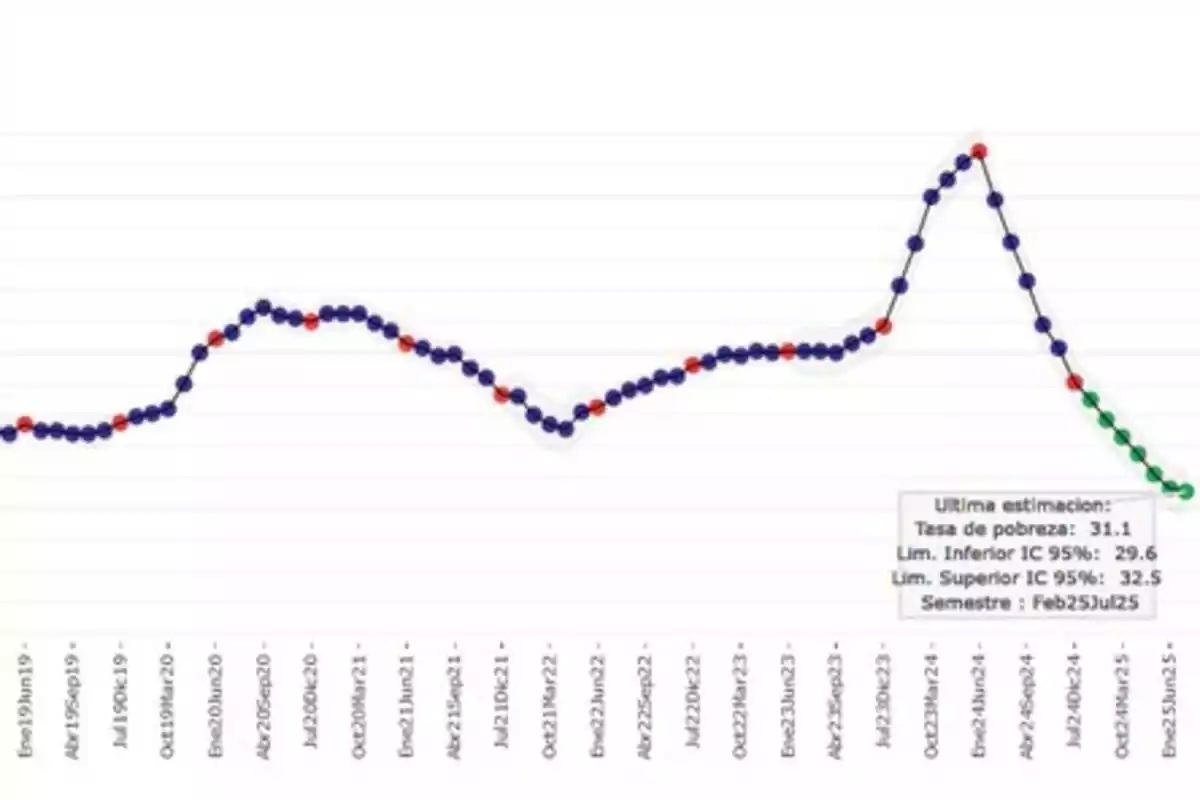
Poverty in July fell to 29.6% and marks the lowest level since 2018, according to UTDT
Torcuato Di Tella University published its new poverty report after the July inflation data was released
After the release of July's inflation data, Universidad Torcuato Di Tella (UTDT) published its projection and revealed that poverty in Argentina experienced a new decrease, standing at 29.6% in July 2025.
This figure not only marks the lowest poverty level since 2018, but also reflects a sustained improvement trend in recent months, driven by the recovery of real incomes in a context of price stabilization, a central objective of President Javier Milei's administration.
The report, which is based on the projection of household incomes and the evolution of the Total Basic Basket (CBT), indicates that the average for the February-July 2025 semester recorded a poverty rate of 31.1%, representing a sharp reduction compared to the 52.9% reached in the first semester of 2024, when high inflation and the severe economic crisis inherited from Kirchnerism affected Argentinians.

According to UTDT, the improvement is due to a combination of factors: the year-on-year growth of Total Household Income (ITF), which increased by 85.2%, far exceeding the 35.4% increase in the CBT over the same period. This resulted in a recovery of households' purchasing power, especially among the most vulnerable sectors.
The breakdown of quarterly figures shows that poverty stood at 31.6% in the first quarter, 31.2% in the second, and dropped to 29.6% in July, thus consolidating a downward trend. In population terms, out of the 29.7 million people living in urban areas, around 9.2 million are in poverty, which represents a significant reduction compared to previous records.
Experts emphasize that this decline is due to incomes growing above the increase in the cost of basic baskets, a result of slowing inflation and the macroeconomic stability achieved by Milei's government. From the second semester of 2024, the gap between the variation in basket prices and household incomes began to close, and by 2025 the trend had consolidated.

The indigence figure also showed a strong improvement: the projection for the February-July 2025 semester is 7%, well below the 18.2% recorded at the peak of the Kirchnerist crisis.
These results mark a change in direction compared to previous years and demonstrate the success of the fiscal adjustment strategy, market opening, and elimination of monetary issuance, policies that are delivering tangible results in improving purchasing power and reducing poverty.
More posts: